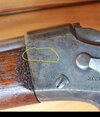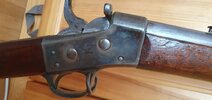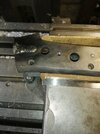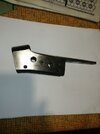Wartburg 1.3 lover
Member
Hello, I recently bought this Springfield Model 1871 Rolling block. The condition is very nice. The barrel is 100% mint - no damage, no rust it's like a mirror.
While looking at it and enjoying it's condition I found this line that I can't tell if it's a crack or not. I disassembled and cleaned the rifle replacing the old dried out factory lube with new. Given my many years of firearms collecting experience I can firmly state that this rifle has never produced a shot. There are no signs of wear anywhere on the mechanism and springs, and therefore this crack-like line cannot have been the result of a shot.
Is it possible that this crack-line was caused by the aging of the metal?
I'm sure there's no way to guarantee from pictures if the rifle will explode when fired, but at least does anyone have experience with such figures on old rifles?
Тhere is no indentation in that line and when I go through it with a needle the sharp part doesn't stick there but it still bothers me.
While looking at it and enjoying it's condition I found this line that I can't tell if it's a crack or not. I disassembled and cleaned the rifle replacing the old dried out factory lube with new. Given my many years of firearms collecting experience I can firmly state that this rifle has never produced a shot. There are no signs of wear anywhere on the mechanism and springs, and therefore this crack-like line cannot have been the result of a shot.
Is it possible that this crack-line was caused by the aging of the metal?
I'm sure there's no way to guarantee from pictures if the rifle will explode when fired, but at least does anyone have experience with such figures on old rifles?
Тhere is no indentation in that line and when I go through it with a needle the sharp part doesn't stick there but it still bothers me.







